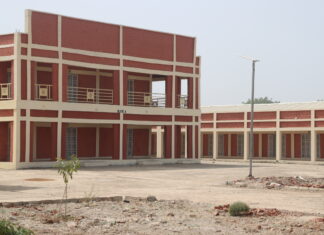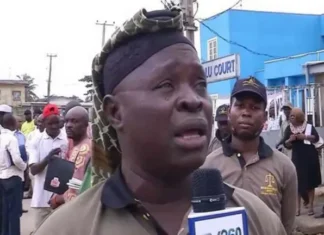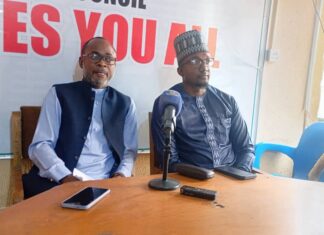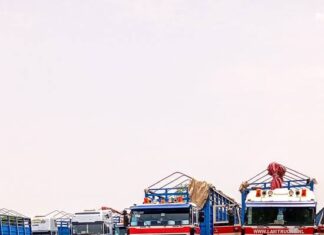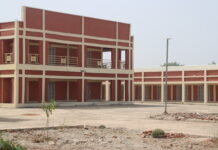BreakThrough
Is Nigeria food secured? An interesting question begging for an answer. Ideally, Nigeria should not only be food secured but should provide similar security to her neighbours and far away countries through massive food exportation.
As a nation, Nigeria is richly endowed with a vast land of 91 million hectares of arable land, the wide variability of annual rainfall. Nigeria has seven distinct climate zones, which provide annual rainfall from 700 mm (Sahel savannah) to 4,000 mm (riverine areas) in the south.
There are 100s of rivers crisscrossing the nation with River Niger as the biggest. The river has a length of 4,180 Km and a drainage basin area of 2.1 million Km2 discharging an average of 5,589 m3/s into Atlantic.
Additionally; the nation’s fast-growing population has 60% active people with the age of less than 35years. However, the situation in the country is far from being ideal. What is the situation?
As I am writing this piece on 26th October 2020, the World Poverty Clock (https://worldpoverty.io/map) indicated that 105,097,805 Nigerians are living under extreme poverty. This figure is out of a population of 205,323,520 people resulting in 51% of the population under the extreme poverty level. Before then, what is “extreme poverty”? What is the implication of people living in “extreme poverty”?
Extreme poverty, abject poverty, absolute poverty, destitution, or penury is one and the same according to Wikipedia. The word was originally defined by the United Nations in 1995 as “a condition characterized by severe deprivation of basic human needs, including food, safe drinking water, sanitation facilities, health, shelter, education and information.
It depends not only on income but also on access to services”. (https://en.wikipedia.org/wiki/Extreme_poverty.) However, in 2018, the word “extreme poverty” was simplified to means people living below the international poverty line of $1.90/day, equivalent to N674 a day in 2011 and today N855 day prices, equivalent to $2.07 (N735 a day in 2017 prices as set by the World Bank. Thus, the poverty level is a measure for food security/insecurity implying that many Nigerians go to bed with an empty stomach.
Nevertheless, Nigeria has a huge potential to change this ugly trend of impoverishment and step into a well-deserved position of a giant of Africa considering her enormous untapped resources. This is because Nigeria’s economy grew from negative growth in 2016 to GDP of 2.55 in 2019 as one of Africa’s largest economies.
The year, 2020 came as the most challenging year in the recent history of mankind. COVID-19 Pandemic devastatingly affected all facets of human endeavours globally. No country was able to escape the wrath of the dreaded pandemic directly or indirectly.
The pandemic affected 215 countries and territories directly with different levels of severity. It is still the global health crisis of our time as well as the greatest challenge that has claimed over a million people.
In Nigeria, International Food Policy Research (IFPRI), Nigerian office conducted a study to determine the effects of the pandemic on the economy. The study reported a decline in GDP and Agric-food system by 38% and 18%, respectively.
It further stated the lockdown during the Pandemic increased the National poverty Rate by 15%(IFFRI, May 2020). Eight months since the Pandemic started and three months since the lockdown relaxation and decline in the COVID-19 incidence, what is the performance of agriculture? Farmers, transportation of food items and inputs were allowed free movements that enable the commencement of farming for the 2020 wet season.
It is within this context of COVID-19, exponential population increase and food security attainment that the results of 2020 Agricultural Performance Survey (APS) become interesting and a major concern to Nigerians particularly, the policymakers.
What is the performance of agriculture in the current 2020 wet season? NAERLS led other important partners to conduct the survey in August and September 2020 across the 36 states and Federal Capital Territory.
APS is one of the national mandates of National Agricultural Extension and Research Liaison Services (NAERLS).
NAERLS is under the auspices of two organizations – FMARD and Ahmadu Bello University Zaria (ABU). This brings the best out of NAERLS. Thus, on one hand, NAERLS personnel have the opportunity to interface with both undergraduate and postgraduate students of ABU in teaching and research activities.
On the hand, the same personnel are involved in agricultural extension activities thereby interfacing with field staff of the 37 ADPs across the nation. NAERLS being an extension service provider has a distinctive position among the Agricultural Research Institutes.
The objectives of the 2020 APSare crops performance assessment during the wet season; crops production forecasts; identification of constraints to increased agricultural productivity and effective extension delivery service.
Feedbacks on-field situation to research Institutes is another objective of APS. The APS methodology involves the use of Participatory Rural Appraisal (PRA) technique. This includes questionnaire/checklists administration, farm visits/observations, interviews with farmers and Ministry/ADP officials/reports of technology review meetings.
A total of twenty multi-disciplinary teams of three scientists each constituting 60 scientists conducted the survey across the 36 States and FCT. Data capture from the farmers was done using electronic Tablets and Apps.
The 2018 APS also captured information on Agricultural Project Interventions at the level of the Local Government Areas through states’ ministries of Local Government across the nation.
Major findings of the 2020 APS will be discussed next week.
Professor Othman is the Executive Director of National Agricultural Extension and Research Liaison Services (NAERLS), ABU Zaria.
Follow the Neptune Prime channel on WhatsApp:
Do you have breaking news, interview request, opinion, suggestion, or want your event covered? Email us at neptuneprime2233@gmail.com

